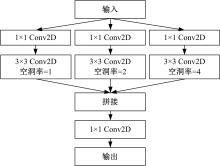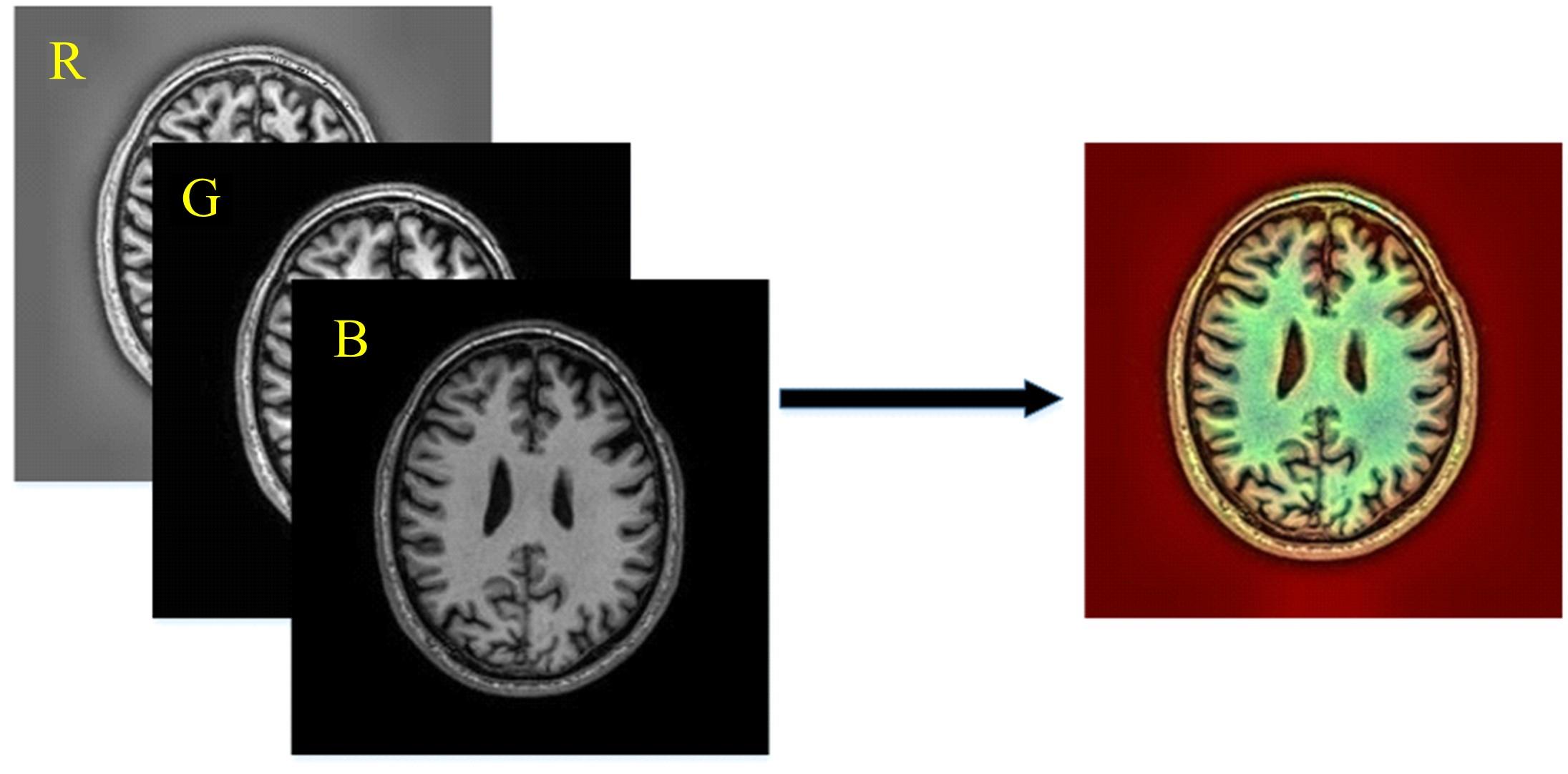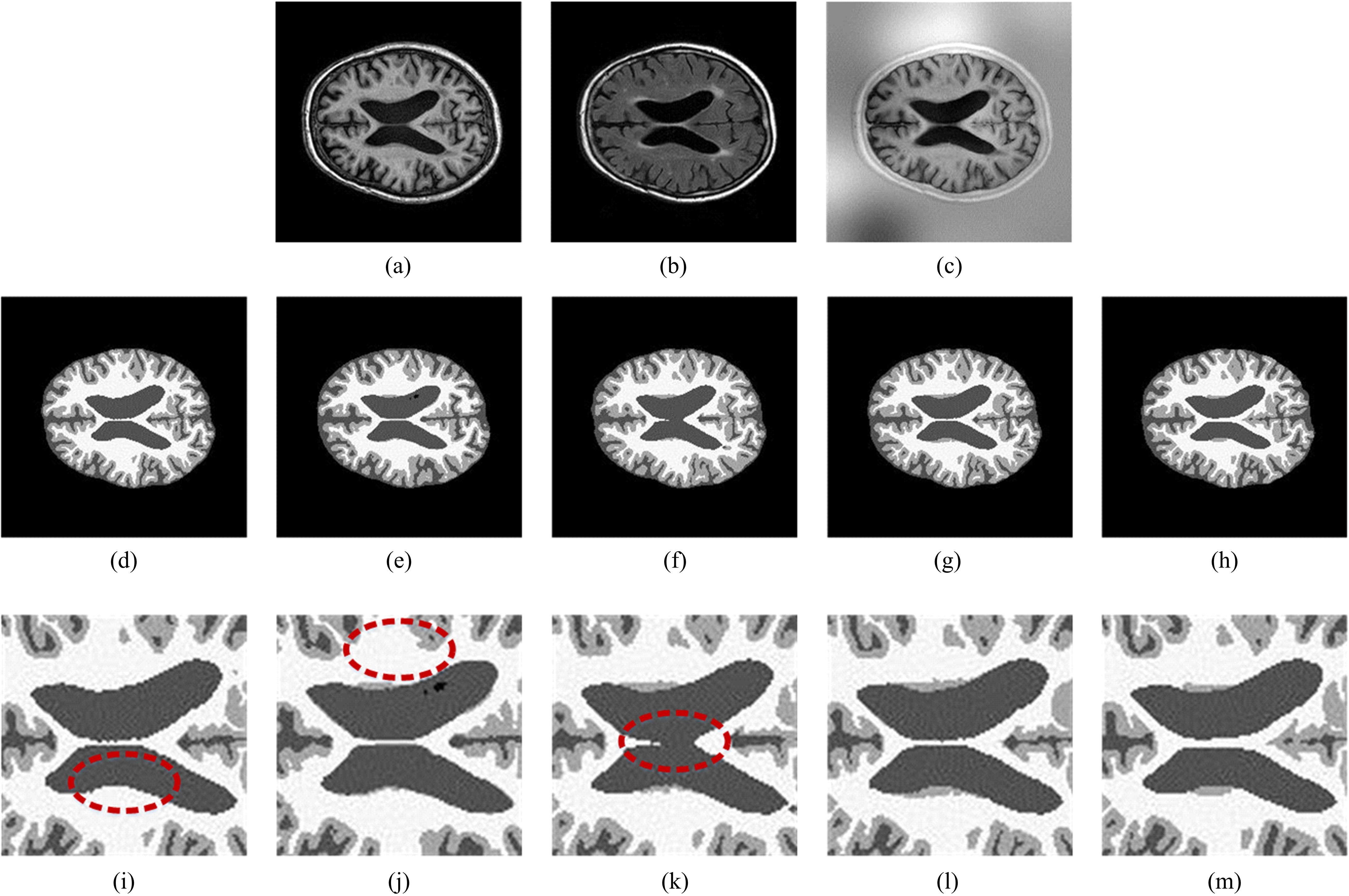Journal of Jilin University(Engineering and Technology Edition) ›› 2023, Vol. 53 ›› Issue (2): 576-583.doi: 10.13229/j.cnki.jdxbgxb20210677
Previous Articles Next Articles
Multi⁃scale attention network for brain tissue segmentation
Jin-Zhen Liu1,2( ),Guo-Hui Gao1,2,Hui Xiong1,2(
),Guo-Hui Gao1,2,Hui Xiong1,2( )
)
- 1.School of Control Science and Engineering,Tiangong University,Tianjin 300387,China
2.Key Laboratory of Intelligent Control of Electrical Equipment,Tiangong University,Tianjin 300387,China
CLC Number:
- TP391.4
| 1 | Angel V P, Reza J, Sarah H L. A transcranial magnetic stimulator inducing near-rectangular pulses with controllable pulse width(cTMS)[J]. IEEE Transactions on Biomedical Engineering, 2008, 55(1): 257-266. |
| 2 | Chen Y M, Gao G H, Xiong H,et al.A multi-channel parameters adjustable magnetic field generator[J].Review of Scientific Instruments, 2020, 91(2): 024709. |
| 3 | 李凝, 王学义, 李小倩, 等. 重复经颅磁刺激与改良电休克治疗首发抑郁症起效时间的随机对照试验[J]. 中国心理卫生杂志, 2015, 29(9): 667-671. |
| Li Ning, Wang Xue-yi, Li Xiao-qian, et al.A randomize controlled trial of early response between repetitive transcranial magnetic stimulation and modified electroconvulsive therapy in patients with first-episode depression [J]. Chinese Mental Health Journal, 2015, 29(9): 667-671. | |
| 4 | 罗明民, 张红雷.低频重复经颅磁刺激联合认知行为疗法对帕金森病患者的影响[J]. 中国老年学杂志, 2019, 39(22): 5556-5559. |
| Luo Ming-min, Zhang Hong-lei. Effects of low frequency repetitive transcranial magnetic stimulation combined with cognitive behavioral therapy on patients with Parkinson's disease[J]. Chinese Journal of Gerontology, 2019, 39(22): 5556-5559. | |
| 5 | Oula P, Koen V L, Guilherme B S, et al. Accurate and robust whole-head segmentation from magnetic resonance images for individualized head modeling[J]. Neuroimage, 2020, 219: 117044. |
| 6 | Virginia C, Henning V, Bernhard S S, et al. Cortical thickness in primary sensorimotor cortex influences the effectiveness of paired associative stimulation[J]. Neuroimage, 2012, 60(2): 864-870. |
| 7 | Rashed E A, Gomez-Tames J, Hirata A. Development of accurate human head models for personalized electromagnetic dosimetry using deep learning[J]. Neuroimage, 2019, 202: 116132. |
| 8 | 郜峰利, 陶敏, 李雪妍, 等. 基于深度学习的CT影像脑卒中精准分割[J]. 吉林大学学报: 工学版, 2020, 50(2): 678-684. |
| Gao Feng-li, Tao Min, Li Xue-yan, et al. Accurate segmentation of stroke in CT image based on deep learning[J]. Journal of Jilin University (Engineering and Technology Edition), 2020, 50(2): 678-684. | |
| 9 | 车翔玖, 董有政. 基于多尺度信息融合的图像识别改进算法[J]. 吉林大学学报: 工学版, 2020, 50(5): 1747-1754. |
| Che Xiang-jiu, Dong You-zheng. Improved image recognition algorithm based on multi⁃scale information fusion[J]. Journal of Jilin University (Engineering and Technology Edition), 2020, 50(5): 1747-1754. | |
| 10 | Chen H, Dou Q, Yu L Q, et al.VoxResNet: deep voxelwise residual networks for brain segmentation from 3D MR images[J].NeuroImage, 2018, 170: 446-455. |
| 11 | Dolz J, Gopinath K, Yuan J, et al. HyperDense-Net: a hyper-densely connected CNN for multi-modal image segmentation[J]. IEEE Transactions on Medical Imaging, 2019, 38(5): 1116-1126. |
| 12 | Li J C, Yu Z L, Gu Z H,et al.MMAN: multi-modality aggregation network for brain segmentation from MR images[J].Neurocomputing,2019,358: 10-19. |
| 13 | Sun L Y, Ma W N, Ding X H, et al. A 3D spatially weighted network for segmentation of brain tissue from MRI[J]. IEEE Transactions on Medical Imaging, 2020, 39(4): 898-909. |
| 14 | Mendrik A M, Vincken K L, Kuijf H J, et al. MRBrainS challenge: online evaluation framework for brain image segmentation in 3T MRI scans[J]. Computational Intelligence and Neuroscience, 2015, 2015: 813696. |
| 15 | Ye H J, Sheng X R, Zhan D C. Few-shot learning with adaptively initialized task optimizer: a practical meta-learning approach[J]. Machine Learning, 2020, 109(3): 643-664. |
| 16 | Wang J, Zhu H D, Wang S H, et al. A review of deep learning on medical image analysis[J]. Mobile Networks & Applications, 2021, 26(1): 351-380. |
| 17 | Tajbakhsh N, Shin J Y, Gurudu S R, et al. Convolutional neural networks for medical image analysis: full training or fine tuning?[J]. IEEE Transactions on Medical Imaging, 2016, 35(5): 1299-1312. |
| 18 | Luo W J, Li Y J, Urtasun R, et al. Understanding the effective receptive field in deep convolutional neural networks[C]∥30th Conference on Neural Information Processing Systems, Barcelona, Spain, 2016: 4905-4913. |
| 19 | Yu F, Koltun V. Multi-scale context aggregation by dilated convolutions[EB/OL]. [2016-04-30]. |
| 20 | Woo S, Park J, Lee J Y, et al. CBAM: convolutional block attention module[C]∥15th European Conference on Computer Vision, Munich, Germany, 2018: 11211. |
| 21 | Stollenga M F, Byeon W, Liwicki M, et al. Parallel multi-dimensional LSTM, with application to fast biomedical volumetric image segmentation[C]∥29th Annual Conference on Neural Information Processing Systems, Montreal, Canada, 2015: 2998-3006. |
| [1] | Xian-yu QI,Wei WANG,Lin WANG,Yu-fei ZHAO,Yan-peng DONG. Semantic topological map building with object semantic grid map [J]. Journal of Jilin University(Engineering and Technology Edition), 2023, 53(2): 569-575. |
| [2] | Xiao-hu SHI,Jia-qi WU,Chun-guo WU,Shi CHENG,Xiao-hui WENG,Zhi-yong CHANG. Residual network based curve enhanced lane detection method [J]. Journal of Jilin University(Engineering and Technology Edition), 2023, 53(2): 584-592. |
| [3] | Hui-zhen ZHANG,Zheng-kai GAO,Jian-qiang LI,Chen-xi WANG,Yu-biao PAN,Cheng WANG,Jing WANG. Short⁃term passenger flow forecasting of urban rail transit based on recurrent neural network [J]. Journal of Jilin University(Engineering and Technology Edition), 2023, 53(2): 430-438. |
| [4] | Peng GUO,Wen-chao ZHAO,Kun LEI. Dual⁃resource constrained flexible job shop optimal scheduling based on an improved Jaya algorithm [J]. Journal of Jilin University(Engineering and Technology Edition), 2023, 53(2): 480-487. |
| [5] | Yong-ming LI,Xiao-xuan PEI,Shu-dong YI. Adaptive neural network optimal control of hybrid electric vehicle power battery [J]. Journal of Jilin University(Engineering and Technology Edition), 2022, 52(9): 2063-2068. |
| [6] | Gui-he QIN,Jun-feng HUANG,Ming-hui SUN. Text input based on two⁃handed keyboard in virtual environment [J]. Journal of Jilin University(Engineering and Technology Edition), 2022, 52(8): 1881-1888. |
| [7] | Xuan-jing SHEN,Xue-feng ZHANG,Yu WANG,Yu-bo JIN. Multi⁃focus image fusion algorithm based on pixel⁃level convolutional neural network [J]. Journal of Jilin University(Engineering and Technology Edition), 2022, 52(8): 1857-1864. |
| [8] | Fu-heng QU,Tian-yu DING,Yang LU,Yong YANG,Ya-ting HU. Fast image codeword search algorithm based on neighborhood similarity [J]. Journal of Jilin University(Engineering and Technology Edition), 2022, 52(8): 1865-1871. |
| [9] | Zhen SONG,Jie LIU. Time series prediction algorithm of vibration frequency of rotating machinery [J]. Journal of Jilin University(Engineering and Technology Edition), 2022, 52(8): 1764-1769. |
| [10] | Xian-min SONG,Shu-tian YANG,Ming-xin LIU,Zhi-hui LI. Fluctuation characteristics and prediction method of bus travel time between stations [J]. Journal of Jilin University(Engineering and Technology Edition), 2022, 52(8): 1792-1799. |
| [11] | Tian BAI,Ming-wei XU,Si-ming LIU,Ji-an ZHANG,Zhe WANG. Dispute focus identification of pleading text based on deep neural network [J]. Journal of Jilin University(Engineering and Technology Edition), 2022, 52(8): 1872-1880. |
| [12] | Feng-feng ZHOU,Hai-yang ZHU. SEE: sense EEG⁃based emotion algorithm via three⁃step feature selection strategy [J]. Journal of Jilin University(Engineering and Technology Edition), 2022, 52(8): 1834-1841. |
| [13] | Feng-feng ZHOU,Yi-chi ZHANG. Unsupervised feature engineering algorithm BioSAE based on sparse autoencoder [J]. Journal of Jilin University(Engineering and Technology Edition), 2022, 52(7): 1645-1656. |
| [14] | Jun WANG,Yan-hui XU,Li LI. Data fusion privacy protection method with low energy consumption and integrity verification [J]. Journal of Jilin University(Engineering and Technology Edition), 2022, 52(7): 1657-1665. |
| [15] | Sheng-sheng WANG,Lin-yan JIANG,Yong-bo YANG. Transfer learning of medical image segmentation based on optimal transport feature selection [J]. Journal of Jilin University(Engineering and Technology Edition), 2022, 52(7): 1626-1638. |
|











